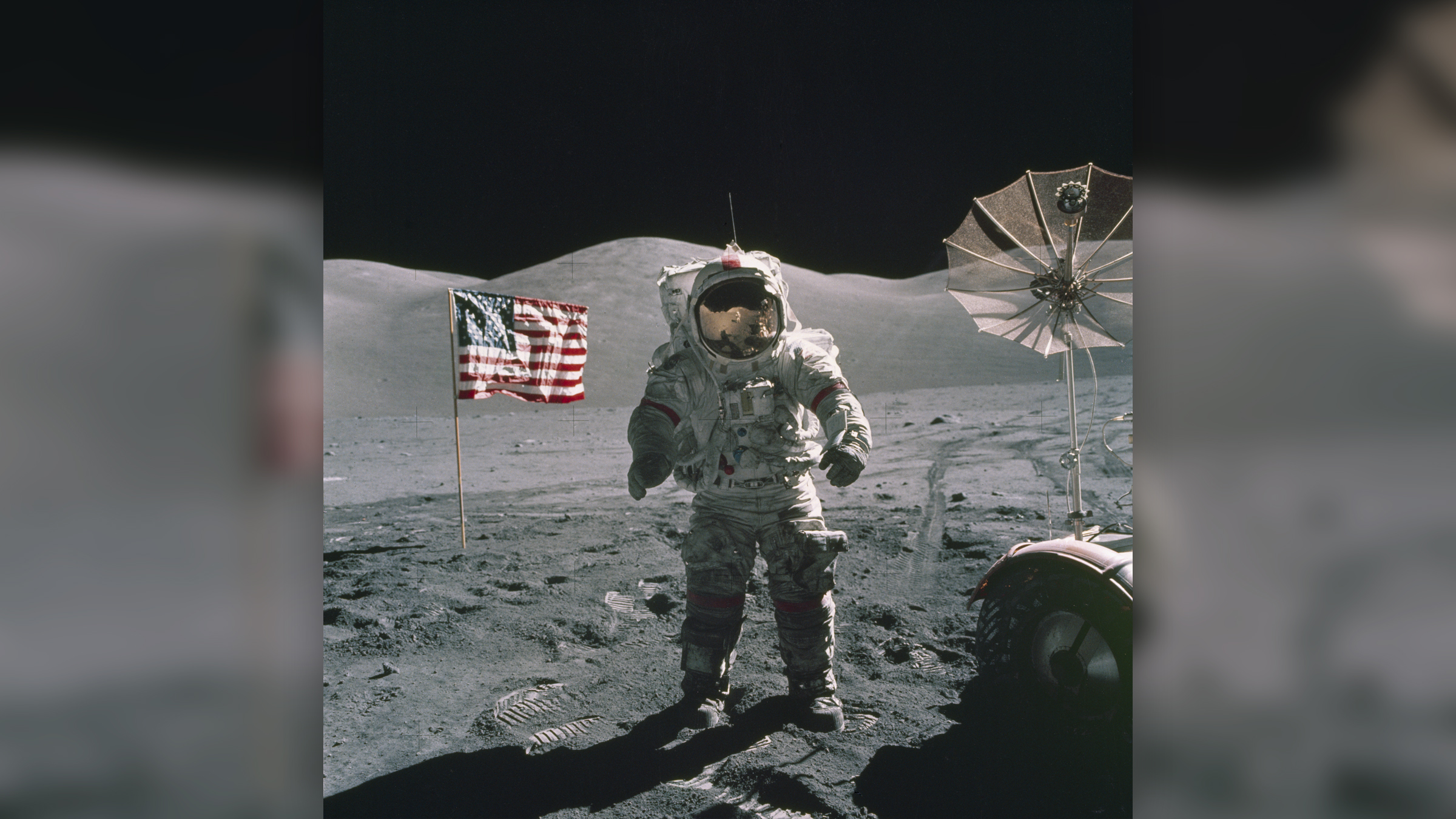Who owns the moon?
Does anyone have sovereignty over the moon? And can anyone buy it?
The flags of two countries hang unfurled — not by any breeze but by metal wiring — over the desolate, eerily still surface of the moon. One is the stars and stripes of the United States; the other, the crimson of China. But if you ask any official from these countries, they will tell you that these flags do not represent a property claim of any kind. They're more like extraterrestrial graffiti.
But if planting a flag on the moon doesn't count as a property claim, then what does? And when you get down to it, can anyone actually own the moon?
When the Soviet Union's Sputnik 1, the world's first artificial satellite, streaked across the sky in October 1957, it opened up a whole new realm of possibilities. Some of those possibilities were scientific, but others were legal. Over the following decade, the international community drafted the Outer Space Treaty of 1967 (OST), the world's first legal document explicitly pertaining to space exploration.
This treaty remains the most influential piece of space law, despite the fact that it's very difficult to enforce. "It's not a code of conduct," said Michelle Hanlon, a space law expert at the University of Mississippi School of Law. "It's just guidelines and principles."
Related: What is the 'man in the moon,' and how did it form?
Despite the lack of enforceability, the OST is clear about countries making land grabs in space. Article 2 of the treaty explicitly rules out the possibility of a country claiming ownership of parts of space or any celestial bodies. "A state cannot claim sovereignty on the moon, period," Hanlon told Live Science.
But when it comes to building structures like bases and habitats on lunar soil, Hanlon said, things get murkier. "They are a kind of territory by another means, right?"
Get the world’s most fascinating discoveries delivered straight to your inbox.
The Universal Declaration of Human Rights — which holds sway in space under Article 3 of the OST — states that individuals have a fundamental right to own property. This means that, hypothetically, any person could build a house on the moon and claim it as their own. And several people have claimed to own parts of the moon, including Robert R. Coles, the former chairman of New York City's Hayden Planetarium at the American Museum of Natural History, who attempted to sell off acres of the moon for $1 a piece in 1955, the New York Times reported.
However, the OST's Article 12 includes a provision that could thwart such an attempt. It states that any installation on another celestial body must be usable by all parties. In other words, Hanlon said, it would have to function as a public space. The Moon Treaty of 1979 would have helped reconcile Article 2 with Article 12 by stipulating that any commercial or individual party acting in space be considered part of its nation of origin, rather than an independent entity. But the United States, China and Russia have so far failed to ratify this agreement, and so it is largely considered impotent. As missions like NASA's Artemis Program and China and Russia's joint moon base project kick into gear, space lawyers like Hanlon will have to do the hard work of reconciling Article 2 with Article 12.
More recently, NASA attempted to fill in some of the space law gaps with the Artemis Accords, an international agreement designed to smooth future exploration. Building on the Outer Space Treaty, the accords lay out a series of non-binding principles governing activity on several celestial bodies, including the moon. Among its provisions is a recognition of certain lunar regions, like Russia's Luna probe landing site and Neil Armstrong's footprints, as protected outer space heritage.
But notably, the accords also allow for entities to extract and use extraterrestrial resources, which not every country is thrilled about. Twenty-one countries have signed the accords so far, though some major players, including Russia, have refused based on this clause, which they see as providing an unfair advantage to American business interests, Science reported. And some scholars have pointed out that literally taking dirt from the moon feels suspiciously like owning land.
There are other avenues for claiming property without actually claiming property on the moon. For example, using scientific equipment, like rovers or stationary seismometers, could potentially turn into de facto land claims if the research team forbids other people from coming too close to their equipment. All of these are sure to become legal sticking points in the next few decades.
"In many ways, this is not an immediate issue," Hanlon said. "And in many ways, it is."But at the end of the day, "we have to be really, really careful about how we proceed responsibly," she said.
Editor's note: Updated at 10:16 a.m. EST on Dec. 5 to note that the Outer Space Treaty is difficult to enforce.

Joanna Thompson is a science journalist and runner based in New York. She holds a B.S. in Zoology and a B.A. in Creative Writing from North Carolina State University, as well as a Master's in Science Journalism from NYU's Science, Health and Environmental Reporting Program. Find more of her work in Scientific American, The Daily Beast, Atlas Obscura or Audubon Magazine.
 Live Science Plus
Live Science Plus








